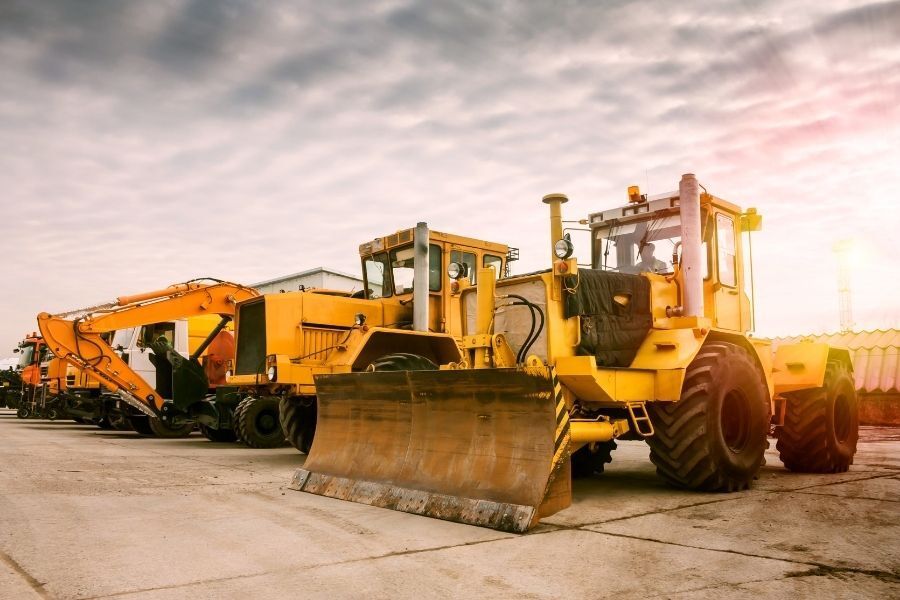Maximize Your Budget Plan by Recognizing the Costs Associated With Construction Tools Leasings
Recognizing the complete scope of costs connected with construction devices services is critical for optimizing your spending plan. While the preliminary rental cost might appear simple, numerous added expenses-- such as transport, gas surcharges, and maintenance-- can rapidly build up, affecting your economic planning. Moreover, being aware of numerous costs and the intricacies of rental contracts can assist avoid unexpected financial concerns. What approaches can be utilized to effectively manage these costs and make certain a more reliable rental experience?
Summary of Rental Expenses
When thinking about construction devices services, recognizing the connected expenses is critical for efficient budgeting and job preparation. Rental expenses can differ dramatically based on numerous factors, including equipment kind, duration of leasing, and area. The preliminary rental fee typically mirrors the tools's market demand and its linked operational capabilities, influencing the general expense.
In enhancement to the base rental rate, secondary costs may emerge, such as transportation costs, gas surcharges, and upkeep fees. It is important to account for these added expenses to properly analyze the overall expense of leasing equipment. The rental duration can influence rates; longer rentals may qualify for discounted rates, while temporary leasings may incur greater daily charges.

Failure of Rental Prices
A comprehensive understanding of rental prices is important for service providers and project supervisors intending to maximize their spending plans. Rental rates for building tools commonly contain a number of components, including base prices, time-based costs, and use fees.
Base rates are the core costs related to the leasing of the equipment, usually identified by the kind and size of the machinery. These rates can vary significantly, influenced by variables such as tools need, accessibility, and regional market trends. Time-based costs, which may be daily, weekly, or monthly, serve to accommodate different project timelines and rental periods.
In addition, rental rates may consist of use costs, which apply when tools is made use of past a defined limit, making certain that the rental firm can account for damage. Seasonal demand fluctuations can also affect rental rates, with peak building seasons usually commanding higher rates.
Moreover, understanding the rental firm's plans pertaining to maintenance and insurance policy can offer additional understanding into the general expense framework. By assessing these components, contractors can make informed decisions, guaranteeing the selection of rental equipment straightens with both task requirements and spending plan restraints.
Added Fees to Think About
Comprehending the complexities of added costs is vital for professionals to handle their total leasing expenditures efficiently. Past the conventional rental rates, various extra fees can considerably impact the total cost of tools rental. These charges often include distribution and pick-up charges, which can vary based on range and logistics associated with transporting the equipment to and from the task website.
Additionally, some rental firms might enforce fuel view publisher site surcharges if the devices is returned with much less gas than when rented. It is also necessary to know possible cleaning charges, specifically for customized tools that calls for detailed maintenance after usage.

Thoroughly evaluating the rental arrangement and clarifying these added costs in advance can aid service providers make sure and prevent unexpected costs that spending plans continue to be intact throughout the project lifecycle.
Repair And Maintenance Expenses
Routine repair and maintenance expenses are often overlooked variables that can considerably influence the total price of building and construction equipment leasings. When renting out tools, it is crucial to take into consideration not just the rental fees however likewise the possible prices related to maintaining the equipment in optimum operating condition.
Many rental business include basic upkeep as component of the rental arrangement; nevertheless, much more unanticipated break downs or extensive repair services can cause extra expenses. It's necessary to examine the rental agreement thoroughly to understand what maintenance services are covered and what duties fall on the occupant.
Furthermore, devices that is not properly maintained can bring about inefficiencies at work site, potentially enhancing and triggering hold-ups task prices. To mitigate these risks, it is advisable to perform regular evaluations and preserve open interaction with the rental supplier additional hints pertaining to any concerns that develop during usage.
Insurance and Liability Costs
Insurance coverage and responsibility expenses are vital parts that can substantially influence the general expense of building tools leasings (boom lift rental). These expenses make sure that both the rental firm and the client are shielded from potential financial losses developing from mishaps, damage, or burglary during the rental duration

Additionally, customers should know any type of deductibles or exclusions in the insurance coverage policy, as these can affect prospective out-of-pocket expenses. Recognizing the terms of any kind of insurance policy protection is vital to avoid unexpected prices. Inevitably, budgeting for insurance coverage and obligation expenditures can aid guarantee a smoother rental experience and safeguard against economic risks linked with building and construction jobs.
Final Thought
In final thought, a detailed understanding of the expenses associated with building equipment leasings is essential for reliable budget monitoring. Inevitably, notified decision-making regarding tools leasings contributes to the overall success of building ventures.
Rental prices can differ dramatically based on several elements, including devices type, period of leasing, and location (heavy equipment rental). The rental period can impact prices; longer rentals might qualify for discounted rates, while temporary services could incur greater daily fees
By carrying out detailed study and involving with reliable rental firms, specialists can properly navigate the complexities of rental pricing, eventually maximizing their monetary sources.
Beyond the conventional rental rates, different supplemental fees can dramatically affect official statement the overall cost of devices service. Rental business often provide obligation insurance that covers injuries to third parties or damage to property, while equipment damages insurance policy can cover the expense of repair services or replacement if the leased devices is damaged.